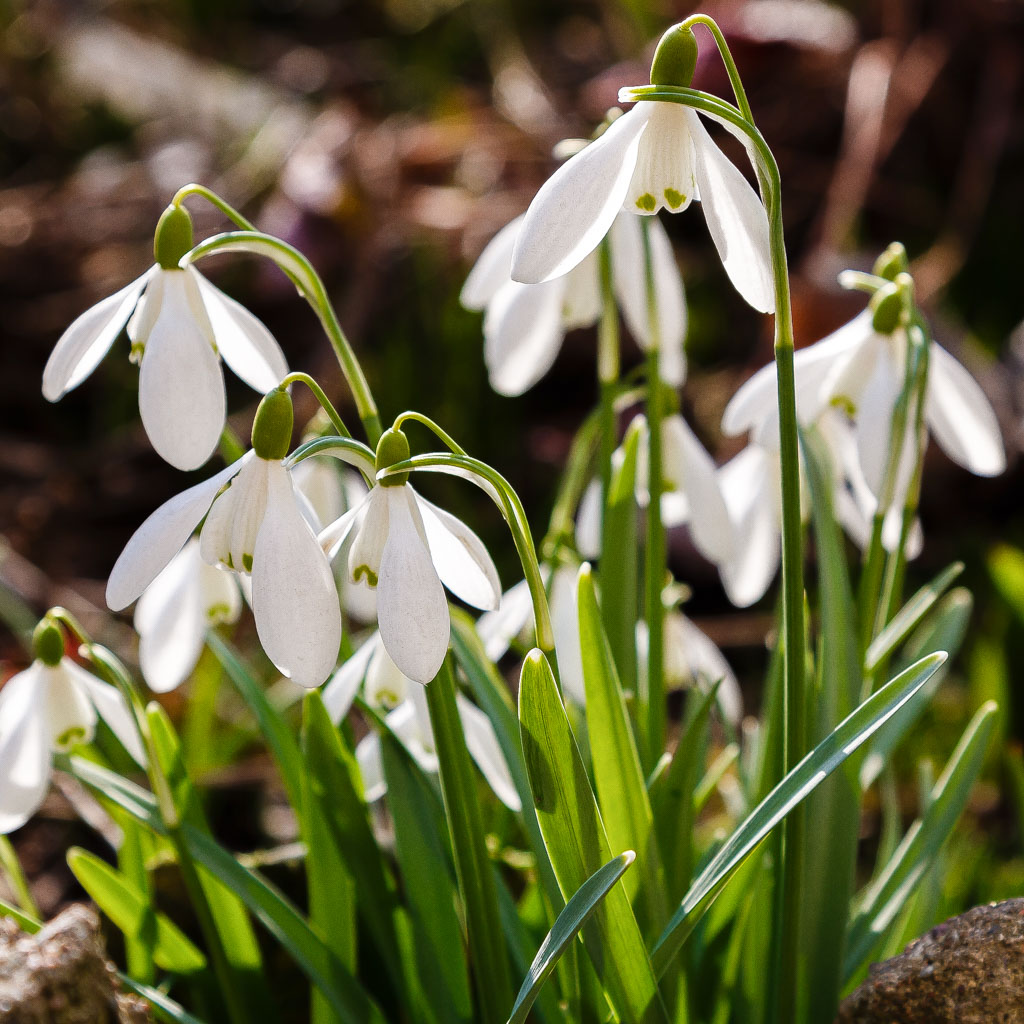These are probably the classic British flower sign of a new year and the approach of spring and as such they are historically a sign of hope…unless there is only one in which case it’s a sign of death approaching and so it was bad luck to bring them into the house.
Snowdrops have always been there so I hadn’t realised that they aren’t native though it’s not known when they were introduced. But then I don’t think really think it matters that they’re not native – wildlife doesn’t really care whether they’re feeding from native or non-native plants. But, snowdrops aren’t really much use to insects because they flower so early in the year they can’t rely on any insects to be around to pollinate them so they spread by bulb division.
This preference for bulb division makes it really easy for us to move them around to colonise another part of the garden. Do this once the flowers have finished, before the leaves have died, and just dig up half a clump and plant it somewhere else. They prefer damp and shady places and because their leaves take a long time to die down and mustn’t be cut, I tend to plant them in areas of long grass. Don’t collect them from the wild though – it’s illegal.
If you really want to get nerdy about snowdrops there are plenty of them to get enthusiastic about with a myriad of different shapes and patterns, and some colour differences too. If you’re quick, there are a number of snowdrop gardens to check them out, including : Eastern Walled Gardens, Lincolnshire; Cerney House Garden, Cornwall; Anglesey Abbey Gardens, Cambridgeshire; Cambo Estate, Fife (holds the National Collection of Galanthus); Burton Agnes Hall, East Yorkshire; Hopton Hall, Derbyshire.
Their bulbs are poisonous to stop deer and squirrels eating them. Don’t try them, they induce vomiting and diarrhoea. Traditionally used to cure headaches they have more recently been developed into treatments for dementia and Alzheimer’s.
📷 Flower_Garden via Adobe Stock #334038800

